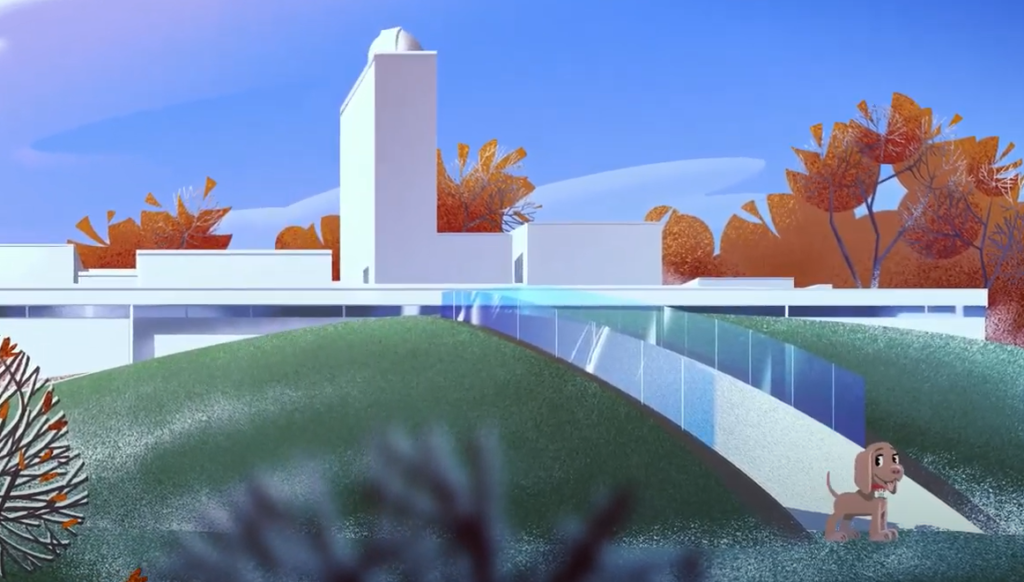In 2019, the Hungarian Tourism Agency launched “Kajla,” a summer campaign designed to encourage family trips to as many places in Hungary as possible. The campaign follows a dog called “Kajla,” around discovering the wonders of Hungary. The campaign has been so successful, it has been expanded with many new products and games last year including “Kajla körök” that promoted forest playgrounds, forest railways and parks. Now, Kajla has returned with a new edition to promote attractions overseas, on the prior territory of Greater Hungary as well including a wide range of cities from the historical Hungary.
The new edition of Kajla promotes several great attractions in Debrecen and it surroundings, including:

Agóra Science and Adventure Center
For those interested in science, the Agóra Science and Adventure Center, is the place to go.
The center opened in 2014, right next to the Botanical Garden of the University of Debrecen, and was designed by two local architects. Kids can emerge in six fields of science – astronomy, physics-robotics, chemistry, botany, biomedical biology and hydrobiology.
Children can be a part of spectacular experiments, plays and interactive games, learn the mysteries of robotics or just get lost in the mirror maze. Once you have experienced enough, you can enjoy the Botanical Garden right next door. It is famous for its collection of cacti and succulents but you can also meet plant species in the approximately 15-hectare garden which will surely be an experience your children will tell in their school.
Reformed Great Church
In the 13th Century, St. Andrew Church, which was built by the Dósa family, stood in place of today’s Reformed Great Church. In the 16th century the St. Andrew Church was destroyed in a fire and rebuilt in gothic style. Unfortunately, it was also completely destroyed in the Great Fire of Debrecen of 1802, and a new church had to be built for the Reformed believers in the city. According to the plans of architect Mihály Péchy, the construction work of today’s church known as The Reformed Great Church of Debrecen began in 1805 and was completed in 1827.
The Reformed Great Church of Debrecen is the largest Reformed church in Hungary and is the most iconic building of the city and is a sight of great importance for the Hungarian Reformed Church. Built-in the neoclassical style, the church can seat nearly 2,000 people.
The Reformed Great Church of Debrecen is not only an ecclesiastical but also an important historical and cultural site where Lajos Kossuth read the Declaration of Independence on April 14, 1849. In 1991, II. Pope John Paul also served in the Reformed Great Church of Debrecen before wreathing a galley sculpture in the Memorial Garden. The first worship was held here on 24th November 1819.
Nine-arched Bridge in Hortobágy
Hortobágy National Park is one the nation’s oldest and biggest national park and the largest semi-natural grassland in Europe. It was elected among the World Heritage sites in 1999 for the preservation of its rich herdsman traditions. It was also awarded the European Destinations of Excellence (EDEN) prize, for the preservation of the herdsman’s traditional way of life. The Nine-arched Bridge is an iconic landmark in Hortobágy. It is the longest road stone bridge in historic Hungary prior to 1921. It was built in 1833 according to the plans of Ferenc Povolny.
The nearby area is the venue of the renowned annual fair and open-air market of handicraft, traditionally held on August 20th. Hortobágy is an ideal home for birdlife. Today this area is world-famous for its extremely diverse bird population and its traditional cultural heritage.
It is recommended for children to take their free “Kajla” passport with them to collect stamps and receive discounts on their travels.